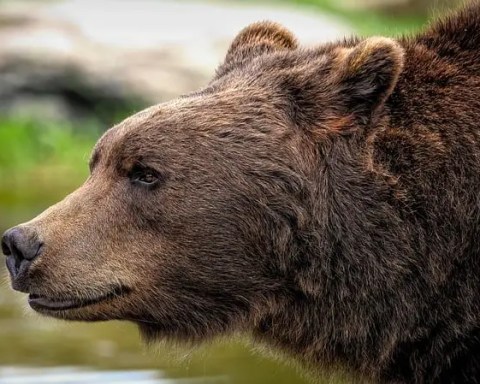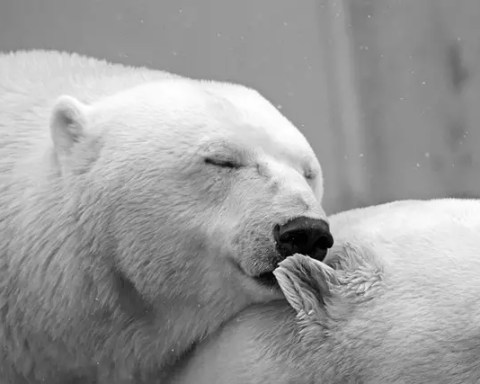Polar bears have long been admired for their cuddly appearance particularly polar bear cubs which do not only look loveable they actually display white fluffy hairs. Children love just about anything about polar bear so that they may prepare polar bear worksheets, polar bear essays, polar bear research projects, and so on. Well, here we’re bringing some of the most fascinating polar bear facts for kids that reflect on the entire life of polar bears in the Arctic.
49 Polar Bear Facts for Kids
- The scientific name of a polar bear is Ursus maritimus. Constantine John Phipps was the first person who gave polar bear a scientific name back in 1774. The word means ‘sea bear’ or ‘maritime bear’.
- The polar bear is the only bear species that can continuously swim for days.
- Polar bear is not white; it only appears to be one. The polar bear hairs are hollow and they reflect the light.
- Polar bear’s skin color is black. One can notice its black skin when the bear sheds its fur possibly due to some disease.
- Polar bears have very sharp sense of smell. They can smell their prey from as far as 1.5 kilometers away.
- They do not make too much noise. During the breeding season male bear growls in order to show aggression to the other male.
- A polar bear is a super carnivore which means that it lives on meat. Unlike other bears, a polar bear never eats grass.
- It is adapted to living in extreme cold weather conditions. Polar bears can survive in temperatures as low as minus 40 degree Fahrenheit.
- Polar bears can spend months in starvation. A mother polar bear does not eat anything during hibernation.
- Polar bears are not true hibernators. They do however enter into dormancy state but scientists do not call it hibernation.
- A female polar bear remains inactive for as long as 4 – 5 months in a year.
- It is one of the few mammals which are quite badly hit by global warming.
- Polar bears are strong swimmers. The longest swimming record by any polar bear is 9 days. This is the record of a female bear.
- The female bear is only half the size of an adult male.
- Adult males sometimes eat polar bear cubs.
- Polar bears sleep and give birth in dens. They will build dens on ice packs.
- The polar bear is the largest bear species.
- It has the shortest tail of all bears.
- A polar bear is the biggest of all carnivorous land mammals.
- Polar bears do not eat penguins.
- Polar bears live in the Arctic whereas penguins are found in the Antarctic.
- During summer, the polar bear coat turns yellow
- Polar bears can run fast but they do not chase their prey for long because they get overheated.
- They do not seem to have any natural predators in the wild.
- Polar bears love to feed on ringed and bearded seals.
- They will not eat humans. A male polar bear is comparatively more aggressive than female bears.
- They have poor eyesight. Polar bears do not depend on sight for hunting prey.
- Polar bears are found in Russia, United States, Canada, Norway, United States, and Denmark.
- The largest population of polar bears occurs in Canada.
- Currently there are 25,000 polar bears living in the Arctic.
- Adult male bears weigh up to 772–1,543 pounds while female averages 331–551 only.
- The length of an adult male is about 7 ft 10 in–9 ft 10 inches with the female measuring up to 5 ft 11 in–7 ft 10 inches.
- Kodiak brown bear is probably the only species which goes about the size of a polar bear.
- Polar bears have quite heavy and sharp claws—perfect for digging ice.
- Polar bears have 42 teeth in total.
- They have long hairs of about 2 – 6 inches in length.
- As the bear grows older the white coat turns yellow.
- The maximum distance covered by any polar bear is estimated at 400 miles in swimming.
- Unlike other bear species, polar bears do not maintain territories.
- They are known to travel alone. However sometimes a group of polar bears is found feeding at the whale carcass.
- During distress, polar bears produce sounds like chuffs and
- Polar bear uses still-hunting method to hunt seals. The bear likely waits for several hours sitting at the same spot—waiting for seal to show up.
- Polar bears eat seals because it provides them blubber as well as calorie-rich skin.
- The polar bear cubs weigh only 2 pounds at birth.
- The female produces two cubs but when the food is scarce she only raises one.
- Males attain maturity at 6 years of age while females become mature at 4 years age.
- The average lifespan of a polar bear is about 20 – 25 years in the wild. One polar bear died at the age of 32 in the wild. The maximum lifespan in captivity is about 43 years.
- Brown bears and polar bears do fight over the food.
- The overall population is stable. The International Union for the Conservation of Nature (IUCN) has listed polar bears as Vulnerable.
Read More: How to Draw a Polar Bear for Kids?




